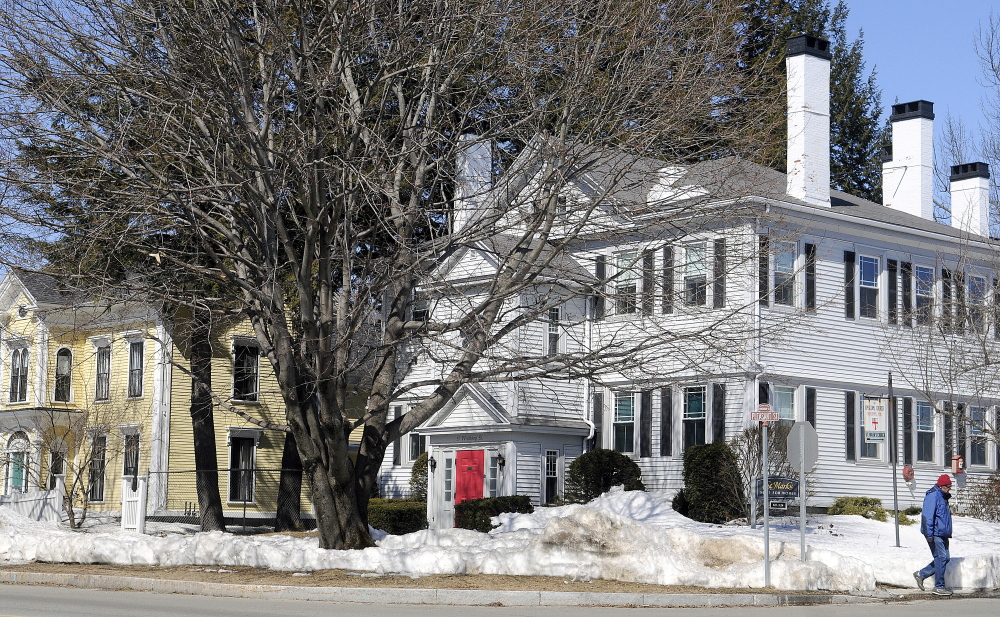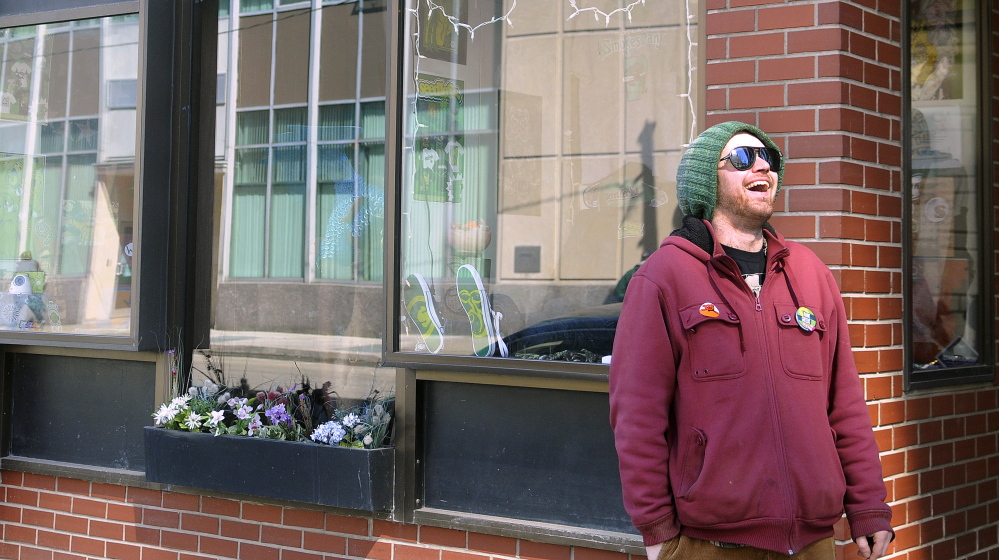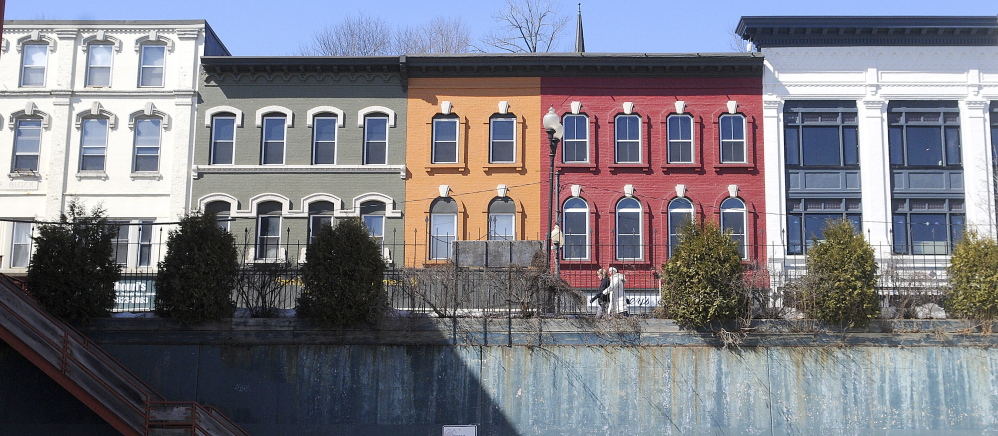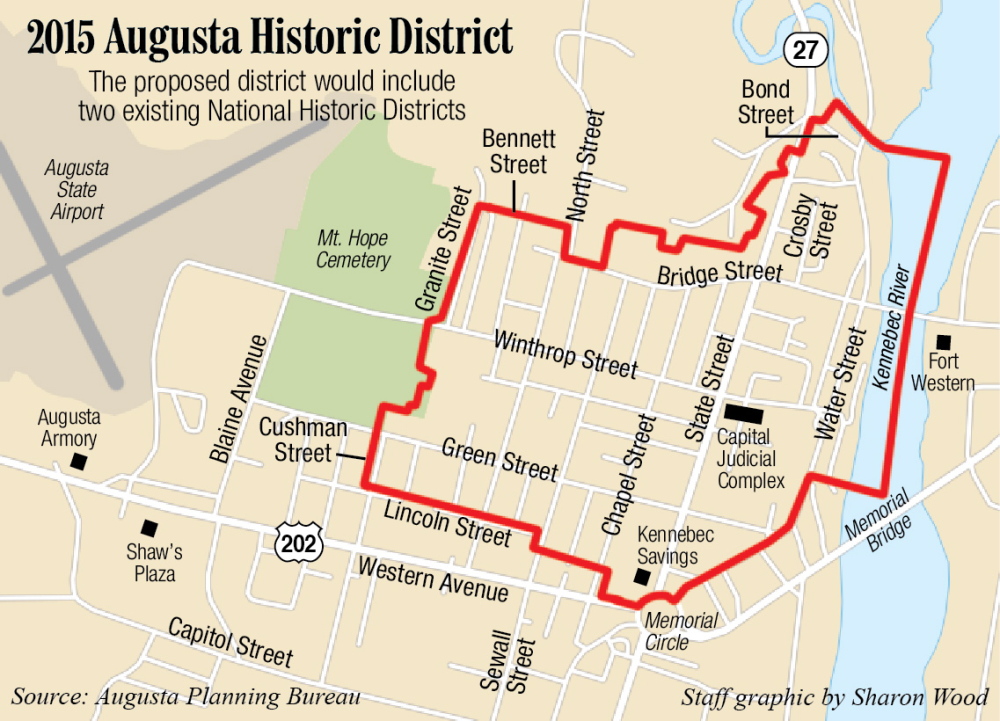AUGUSTA — Owners of most buildings downtown and in nearby neighborhoods would need many exterior building renovations reviewed and approved by a historic review board if the City Council adopts a new ordinance.
Proponents of the proposed Augusta Historic District Ordinance say creating the district would help preserve and protect the historic architecture of the city’s west side.
City councilors plan to meet to discuss the ordinance and district proposals at 6:30 p.m. Thursday in council chambers at Augusta City Center.
The ordinance would create a new locally designated historic district that encompasses two existing designated National Historic Districts surrounding Winthrop and Crosby streets. It would include the downtown Water Street area north until just beyond Bond Street, extend as far south as a small portion of Western Avenue at Memorial Circle, and include homes and other buildings along parts of State, Green, Bridge, Chapel, Melville, South Chestnut, North Chestnut, Spring, Winter and Summer streets.
Mayor David Rollins, who was chairman of the subcommittee that is recommending the proposal, said it didn’t come from city officials’ desire to regulate what building owners can do in that part of the city. Rather, it’s a response to west side neighborhood residents who want to protect the historical integrity of their neighborhood, he said.
“This is not meant to be a heavy-handed government action; it’s the spirit of a neighborhood trying to create an ambience and neighborhood image,” Rollins said. “It should help preserve and protect the historic architecture and culture of that neighborhood, including the downtown, and increase property values.”
Several public hearings were held on the changes, at which only a few building owners expressed concerns, Rollins said. He said some who opposed the idea said they thought people should be allowed to do as they wish with their own property.
Matt Nazar, the city’s development director, also said the feedback at the public hearings was mostly positive, and while a few people had concerns about the proposal’s effect on the cost of renovations, most were enthusiastic that the ordinance could improve the quality of the area.
Larry Fleury, one of the city’s largest landlords, who owns several properties within the proposed historic district, said the ordinance appears to be designed loosely enough so that most residents and landlords should be able to live with it. Fleury is also a former president of the Augusta Downtown Alliance and a historic preservation advocate.
He and Rollins both said other communities with historic districts have seen property values in those areas increase, and having a designated district can help attract visitors and new residents.
As a landlord, Fleury said he doesn’t anticipate meeting the additional review requirement would add much cost to building renovations, though it could add some time to completing projects.
“If you want to do improvements, you will need to get your ducks lined up in order, but I don’t think it’ll add cost,” Fleury said. “People shouldn’t be too frightened by this. The city wants to make sure people don’t make their properties look out of place with the historic character.”
New construction, additions, and exterior renovations to buildings in the district that would be visible from the street would be subject to review and approval by the proposed new Augusta Historic District Review Board, which would review submitted proposals based on guidelines from the Secretary of the Interior’s Standards for the Treatment of Historic Properties.
Work on buildings in the district that wouldn’t require review by the new board would include painting; ordinary maintenance and repair of any exterior architectural feature when that repair does not involve a change in design or appearance; the construction or alteration of any structure not visible from the street; work on any feature the code enforcement officer certifies is required because of unsafe or dangerous conditions; and changes to lawn and garden objects and landscaping including plantings, sculptures, walkways and walls two feet high or lower.
Fleury said he thinks the ordinance would be a “good economic tool.”
“It usually takes time for these districts to kick in, but once they do, they provide a sense of community, a deeper link to the past,” he said.
Rollins, a real estate appraiser, said he’s seen property values and community pride increase in other areas where they have required historic architecture to be preserved and maintained.
“The commitment has got to be from the neighborhoods and people in the district; it can’t just be an ordinance,” he said. “You need to embrace the spirit of the ordinance to move your area of town to a vibrant district that attracts investors and residents that want to live there.”
Rollins said the city also is seeking to have the downtown area designated a National Historic District, which could allow building owners there to tap into federal historic preservation tax credit funding for major building renovations.
Rollins said the proposed new review board would be appointed, not elected, and would include people from inside and outside the district.
Councilors on Thursday are also scheduled to discuss:
• a Planning Board recommendation to amend the city’s sign ordinance to allow official business directional signs along a segment of the Route 3 Connector to assist people in finding businesses along West River Road and Riverside Drive as they travel to and from Interstate 95’s exit 113 and the coast;
• a proposal to allow some nonresidents to use the city-owned and operated Bicentennial Nature Park on Three Cornered Pond at higher fees than those charged to residents to help raise more revenue to operate the park; and
• a proposal to decrease the per-capita fees charged to seven surrounding municipalities that pay Augusta to allow trash and recyclables generated in their communities to be taken to the city-owned Hatch Hill landfill from $15 per capita to $12 per capita.
City Manager William Bridgeo said the reduced rate could be offered to municipalities that agree to commit to a five-year contract for Hatch Hill to take trash from their businesses and residents. Bridgeo said the landfill generates roughly five times as much revenue from tipping fees as it does from the per-capita fees, and lowering the fees could provide financial stability by preventing the other municipalities from leaving to seek cheaper trash options.
Last year the town of Pittston, a previous participant in the system, left Hatch Hill and now contracts with a West Bath landfill to accept trash from that town. Bridgeo said he knew of no other municipalities planning to stop using Hatch Hill.
Keith Edwards — 621-5647
kedwards@centralmaine.com
Twitter: @kedwardskj
Send questions/comments to the editors.








Success. Please wait for the page to reload. If the page does not reload within 5 seconds, please refresh the page.
Enter your email and password to access comments.
Hi, to comment on stories you must . This profile is in addition to your subscription and website login.
Already have a commenting profile? .
Invalid username/password.
Please check your email to confirm and complete your registration.
Only subscribers are eligible to post comments. Please subscribe or login first for digital access. Here’s why.
Use the form below to reset your password. When you've submitted your account email, we will send an email with a reset code.